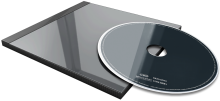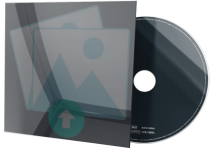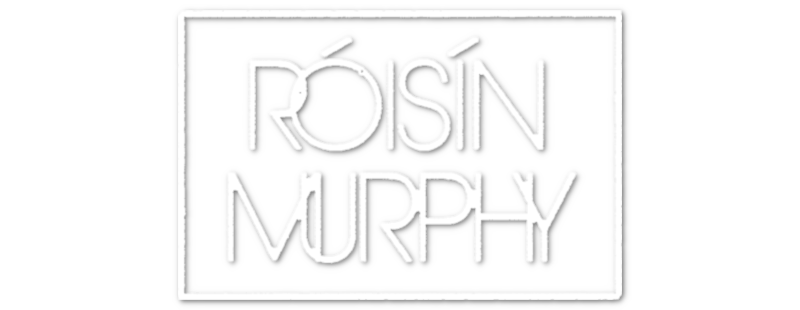Track List
01) Leaving the City
02) Sinking Feeling
03) Night of the Dancing Flame
04) Through Time
05) Sow Into You
06) Dear Diary
07) If We're in Love
08) Ramalama (Bang Bang)
09) Ruby Blue
10) Off on It
11) Prelude to Love in the Making
12) The Closing of the Doors
01) Leaving the City
02) Sinking Feeling
03) Night of the Dancing Flame
04) Through Time
05) Sow Into You
06) Dear Diary
07) If We're in Love
08) Ramalama (Bang Bang)
09) Ruby Blue
10) Off on It
11) Prelude to Love in the Making
12) The Closing of the Doors
4:49
3:32
3:26
5:58
3:56
5:50
4:31
3:35
2:48
5:22
0:53
3:28
Data Complete 80%
Total Rating
Total Rating
Back Cover![]()
CD Art
3D Case
3D Thumb
3D Flat
3D Face
3D Spine
First Released
![]() 2005
2005
![]() Electronic
Electronic
![]() ---
---
![]() Rock/Pop
Rock/Pop
![]() ---
---
![]() Medium
Medium
![]() Album
Album
![]() 0 copies
0 copies
Album Description
Available in:
Ruby Blue is the debut solo studio album by Irish singer Róisín Murphy. It was released on 13 June 2005 by Echo. After she and Mark Brydon dissolved their electronic music duo Moloko, Murphy began working with producer and musician Matthew Herbert. The songs were first released through three extended plays and were then compiled into a studio album.
The album often samples sounds made by everyday objects and actions, including cosmetics, brass mice, dancing and ornaments. It mixes the electronic music for which Moloko was known with jazz and pop styles. Ruby Blue received positive reviews from music critics and peaked at number 88 on the UK Albums Chart. The album spawned two singles, "If We're in Love" and "Sow into You".
Background
Murphy and Mark Brydon ended their romantic relationship but were still contractually obligated to record another album, which became Moloko's 2003 album Statues. When she finished touring, she found herself alone and had to re-evaluate the friendships she had built. During this time, she got to know Matthew Herbert, whom she had met when he remixed several of Moloko's songs. Murphy had wanted to work with him again, commenting that "it felt very natural because Matthew makes things seem quicker and easier". During the first day of recording with Herbert, he had her bring an unspecified object so that they could hit it against a microphone and record the sound it made. Herbert's approach was that for Murphy to go solo, the album should revolve around her and the sounds that surround her. They wanted to carry out recording and audio mixing in one room, so Herbert invested in a studio. There, Herbert recorded Murphy's voice without accompaniment so that she could better hear how her voice naturally sounded. On occasion, the two added instruments to a track by having her hire an instrumentalist, sometimes to play an unusual instrument such as a hammered dulcimer.
After the pair had recorded a few songs, Murphy found that she enjoyed working with Herbert, and her label let her work freely without any deadline. When she presented them the album, they found it odd and did not hear any songs that would make successful singles. The A&R division suggested that Murphy make some changes to make it more radio-friendly. Murphy refused, stating that she "wanted it to be as pure as possible". The label later came to support her. The songs on Ruby Blue were gradually released on limited-edition 12-inch vinyl EPs titled Sequins 1, Sequins 2 and Sequins 3, in January, February and May 2005 respectively.
The cover art for Ruby Blue was painted by Simon Henwood. Murphy met Henwood in a pub, and Henwood, who was known for his simplified paintings of teenagers, thought that she would be a good subject for a painting. Henwood came to Murphy's house the next week and, while they were looking through her wardrobe, decided to have her dressed in sequins. Murphy positioned her body in abstract shapes for Henwood to paint. She developed a character, which Henwood described as a "disco electro pop diva with a 1940s look". His canvases were displayed at The Hospital in London, and Murphy purchased them "for kids so they can see what once looked like". The three EPs and both singles used Henwood's paintings in the cover, and he later directed the music videos for the singles.

User Album Review
None...
External Album Reviews
None...
User Comments


Available in:
Ruby Blue is the debut solo studio album by Irish singer Róisín Murphy. It was released on 13 June 2005 by Echo. After she and Mark Brydon dissolved their electronic music duo Moloko, Murphy began working with producer and musician Matthew Herbert. The songs were first released through three extended plays and were then compiled into a studio album.
The album often samples sounds made by everyday objects and actions, including cosmetics, brass mice, dancing and ornaments. It mixes the electronic music for which Moloko was known with jazz and pop styles. Ruby Blue received positive reviews from music critics and peaked at number 88 on the UK Albums Chart. The album spawned two singles, "If We're in Love" and "Sow into You".
Background
Murphy and Mark Brydon ended their romantic relationship but were still contractually obligated to record another album, which became Moloko's 2003 album Statues. When she finished touring, she found herself alone and had to re-evaluate the friendships she had built. During this time, she got to know Matthew Herbert, whom she had met when he remixed several of Moloko's songs. Murphy had wanted to work with him again, commenting that "it felt very natural because Matthew makes things seem quicker and easier". During the first day of recording with Herbert, he had her bring an unspecified object so that they could hit it against a microphone and record the sound it made. Herbert's approach was that for Murphy to go solo, the album should revolve around her and the sounds that surround her. They wanted to carry out recording and audio mixing in one room, so Herbert invested in a studio. There, Herbert recorded Murphy's voice without accompaniment so that she could better hear how her voice naturally sounded. On occasion, the two added instruments to a track by having her hire an instrumentalist, sometimes to play an unusual instrument such as a hammered dulcimer.
After the pair had recorded a few songs, Murphy found that she enjoyed working with Herbert, and her label let her work freely without any deadline. When she presented them the album, they found it odd and did not hear any songs that would make successful singles. The A&R division suggested that Murphy make some changes to make it more radio-friendly. Murphy refused, stating that she "wanted it to be as pure as possible". The label later came to support her. The songs on Ruby Blue were gradually released on limited-edition 12-inch vinyl EPs titled Sequins 1, Sequins 2 and Sequins 3, in January, February and May 2005 respectively.
The cover art for Ruby Blue was painted by Simon Henwood. Murphy met Henwood in a pub, and Henwood, who was known for his simplified paintings of teenagers, thought that she would be a good subject for a painting. Henwood came to Murphy's house the next week and, while they were looking through her wardrobe, decided to have her dressed in sequins. Murphy positioned her body in abstract shapes for Henwood to paint. She developed a character, which Henwood described as a "disco electro pop diva with a 1940s look". His canvases were displayed at The Hospital in London, and Murphy purchased them "for kids so they can see what once looked like". The three EPs and both singles used Henwood's paintings in the cover, and he later directed the music videos for the singles.
User Album Review
None...
External Album Reviews
None...
User Comments

No comments yet...


